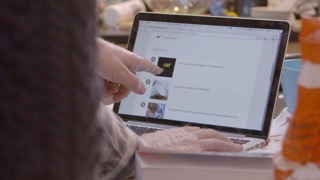Web Accessibility Perspectives: Clear Layout and Design
Introduction
Web accessibility is essential for people with disabilities and useful for all. Learn about the impact of accessibility and the benefits for everyone in a variety of situations.
Video on Clear Layout and Design
[ Previous: Colors with Good Contrast | Overview | Next: Text to Speech ]
What is "Clear Layout and Design"?
The different parts of a web page must be easy to locate and identify. This includes navigation menus, links, and text sections. These should be at predictable locations and consistently identified. Also form labels and instructions have to be clearly associated with their controls.
Who depends on this feature?
- People with low vision who are using screen magnification and only see a portion of the screen at a time.
- People with cognitive and learning disabilities who need clarity and consistency to orient themselves on a website.
What are the additional benefits?
- Content is more usable for people who are new to the particular website or application.
- Content is more usable for people who are not confident using computers and the web.
- Content is more usable for mobile device users who are seeing it on smaller screens, especially if they are in a hurry or distracted.
- Content and functionality is easier to locate and identify by most users.
What needs to happen for this to work?
Design clear structure, both visually and through the markup. For example, make it easy to distinguish sections such as navigation, group related controls in a form, and provide headers to identify groups of information. Provide consistent presentation and behavior of web pages across a website.
Learn more
- Accessibility Principle:
- Getting Started:
- Easy Check:
- User Story:
- Web Content Accessibility Guidelines (WCAG Overview):
- Tutorial:










